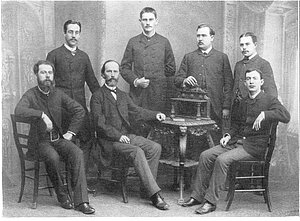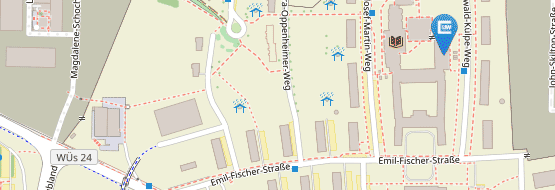Svante Arrhenius
Scholar of the month: Svante Arrhenius
* 19. February 1859 in Vik near Uppsala † 2. October 1927 in Stockholm
1876 Study of Mathematics, Chemistry and Physics at the Universities of Uppsala and Stockholm
1884 Promotion
1885 Travelling fellowship of the Royal Swedish Academy of Sciences
1891 Lectureship at the University of Stockholm
1895 Professorship at the University of Stockholm
1903 Nobel Prize in Chemistry
1905 Chief of the Nobel Institute for Physical Chemistry
Also in the new year the Archives of the University of Würzburg continue their “Scholar of the Month”-Series. This time we would like to present the Swedish Physician and Chemist Svante Arrhenius, who was awarded the Nobel Prize in Chemistry in 1903.
Academic Career
Already when he was young, Svante Arrhenius showed great interests for Mathematics and Physics. From the age of eight, he attended the cathedral school of Uppsala and finished it with attaining his A-levels. Afterwards he started his study of Mathematics, Chemistry and Physics at the University of Uppsala, but transferred to the University of Stockholm in 1881, because of conflicts of opinion with his Professor, the physician Tobias Robert Thalén. There he was significantly supported by the Swedish physician Erik Edlund. In 1884 his dissertation with the title Recherches sur la conductibilité galvanique des électrolytes (Investigations on the galvanic conductivity of electrolytes) followed, however was not met with approval by his colleagues.
Arrhenius’ way to Würzburg
Arrhenius’ claim, that common salt solutions contain sodium and chlorine ions was unthinkable for most natural scientists at that time. Nevertheless, his theory also found prominent encouragement, like for example of the Chemist and Physicist Wilhelm Ostwald who showed great interest on Arrhenius thoughts. Therefor Ostwald visited the young Swedish chemist himself and was able to experimentally confirm his thesis. After refusing an offer of a professorship out of family reasons, he soon started an extended travelling fellowship made possible by the Royal Swedish Academy of Sciences. His travels also brought Arrhenius to Würzburg, where he worked together with the Physician Friedrich Kohlrausch and the later Nobel laureate Walther Nernst. Kohlrausch introduced him to his techniques of measuring the conductivity of diluted solutions. Further stations of Arrhenius travels were Riga, Amsterdam and Graz. Afterwards he received an offer for a professorship in Giessen, which he declined in order to accept a lectureship in Stockholm, which was later converted to a professorship.
The first Swedish Nobel Laureate in Chemistry
In 1903 Arrhenius was the first Swede to be awarded the Nobel Prize for his work on the electrolytic dissociation, with following official motivation: "in recognition of the extraordinary services he has rendered to the advancement of chemistry by his electrolytic theory of dissociation." [1]
Apart from the Nobel Prize, the scientist received a number of further honours, like the Davy-Medal of the Royal Society or a crate on the Mars, which was named after him. Moreover, he became the chief of the Nobel Institute of Physical Chemistry in 1905.
Also in recent debates about the ongoing climate change, the research of Svante Arrhenius are highly relevant. In 1896, he was the first one to predict that a doubling of the concentration of carbon dioxide in the atmosphere will lead to a temperature rise of 5 degrees Celsius.
[1] MLA style: The Nobel Prize in Chemistry 1903. NobelPrize.org. Nobel Media AB 2019. Mon. 7 Jan 2019. https://www.nobelprize.org/prizes/chemistry/1903/summary/
Recommended Readings:
Bugge, Günther: Das Buch der grossen Chemiker, Bd. 2: Von Liebig bis Arrhenius, Weinheim 1955 (unveränd. Nachdruck).
Riesenfeld, Ernst H.: Zum 25jährigen Bestehen der Akademischen Verlagsgesellschaft M.b.H., Leipzig, Leipzig 1931.




